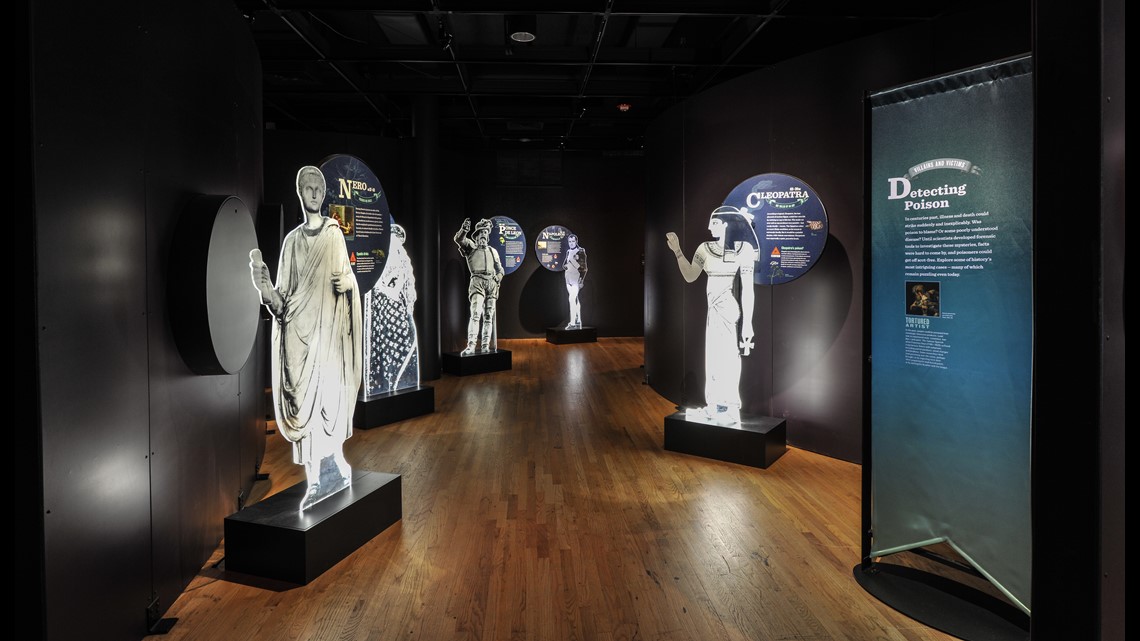GRAND RAPIDS, Mich. — If you haven't been to the Grand Rapids Public Museum since Oct. 22, you haven't had a chance to take in their brand new exhibit, The Power of Poison. We explored the event and are using our new knowledge to kick off a segment titled 'Here's Why.'
The goal of this segment is to answer a simple question, why? Why do different weather, natural, scientific, or other phenomena take place?
We encourage you to send in your questions, and maybe we can answer why for you, as well. Our first topic, of course, is poison.
The Question:
It's easy to ask why poisons exist. Why would a plant, animal, or organism decide to spend energy needed for life to create something to destroy it?
The answers actually have more to do with the preservation of life than it's destruction. Let's take a look!
The Why:
Poisons in nature can exist for a variety of reasons. The most common are as a defense mechanism to help defend against predators or as a offensive weapon to help a predator subdue and consume their next meal.
While at first these two uses seem contradictory, they are actually after the same goal, sustaining the producer of the poison's life. These applications can sometimes even benefit other life beyond the creator of the poison as well.
For example, in South America, certain ant species can use poison to protect the plants they nest in, while destroying other plant life that would choke out their homes. While the plant doesn't create it's own poison, it benefits from the work of the ants.


The impacts of poison don't stop with nature — they thoroughly impact the human world, as well.
In much the same way as plants and animals, humans have sought to use poison to extend their own lives, or take the lives of others. Throughout history, this use of poison has had ups and downs.
Many in the ancient world sought potions, often containing poisons like mercury, with the intent of extending their lives, but ultimately cut them short. For those who knew the havoc such potions could bring, the intentional taking of life from these elixirs was not out of the question.
Others, such as the hat makers in the 1800s, succumbed to mercury poisoning as well, though this was unintentional on their part. Mercury was used in the hat-making process and the poisoning was a side effect of this line of work.
For many in the past who dealt with poisons, their tales live on through stories and legends.
One such story is that of the Mad Hatter in Alice and Wonderland. This character is thought to be based on a victim of mercury poisoning related to the hat makers mentioned above.


While thus far we have talked about the loss of life, the very same poisons can also give life back. New research is leading to breakthroughs in medicine, anti-venoms and treatments for cancer that can all be contributed to poisons.
If you would like to learn more about The Power of Poison, I highly encourage you to check out the exhibit at the GRPM. It will be open from now through the April 16.
Happy learning!
-- Meteorologist Michael Behrens
Follow me on social media! Facebook Meteorologist Michael Behrens, Twitter @MikeBehrensWX, and Instagram @MikeBehrensWX.
Email me at: MBehrens@13OnYourSide.com
Have a 30-second video or still photo to share? We'd love to share it with everyone! Email your image to Weather@13OnYourSide.com or post it to our 13OnYourSide Facebook Page.
►Make it easy to keep up to date with more stories like this. Download the 13 ON YOUR SIDE app now.
Have a news tip? Email news@13onyourside.com, visit our Facebook page or Twitter. Subscribe to our YouTube channel.

